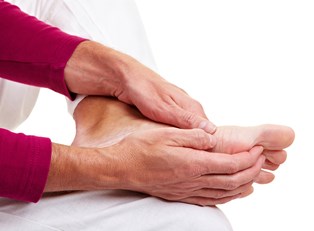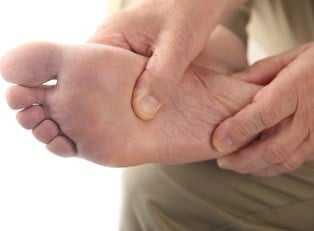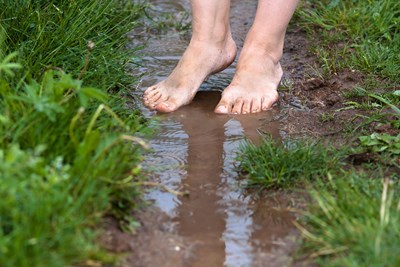Weird bumps tend to pop up all over your body. They can be especially worrying when they’re on your toes or feet, largely because there are so many kinds of bumps that can show up on your feet. Some of them are nothing to worry about, while others can be chronic or a sign of something worse to come. If you’ve been wondering what in the world that bump on your toe is, you’ve come to the right place.
Blisters
If you have a blister on your toe, you probably aren’t too worried about it. Blisters pop up from too much heat or friction rubbing against the skin. The top layer of skin pulls away and a bunch of pus forms in between it and the rest of the layers. Blisters can become infected and lead to more severe problems, so keep it clean and taken care of.
However, if you’re getting blisters no matter how comfy your shoes or how inactive your feet, you should know blisters can also be the result of certain contagious or chronic diseases. According to the National Health Services of the United Kingdom, blisters can be a reaction from: chicken pox, cold sores, herpes, impetigo (a bacterial skin infection), pompholyx (a form of eczema), scabies, and hand foot and mouth disease (a viral infection). If you have blisters all over your body, that bump on your toe is probably more than just a friction blister.
Bunions
Bunions are bumps that form on the connecting joint of the big toe. Structural abnormalities, stress on the foot, too-narrow shoes, or issues like arthritis can increase the likelihood of a bunion’s development. The big toe is pushed toward the other toes, and the joint swells and can become painful.
Bunionettes can develop on your smallest toe in the same way. The bump may be visible, red, painful, or develop corns or calluses over it. Wearing more comfortable shoes may help alleviate bunions, and ice or nonsteroidal anti-inflammatories may help with persistent pain. If the pain becomes unbearable, surgery may be an option.
Corns
Corns are much like calluses: layers of skin that build up to form a hard, protective barrier. Protecting them from the friction may make them feel better. The main difference between corns and calluses are that corns tend to be smaller, have a hard center, swollen skin, hurt to the touch, and pop up in places that don’t generally bear weight. Calluses are (generally) just rough, thick areas of skin that develop from constant friction and do not hurt.
Warts
Plantar warts in particular are caused by the human papilloma virus and develop on the soles of the feet when small cuts appear and the virus can break through. They may look like a grainy growth or thick spot of skin if the wart is growing inward. Clotted blood vessels may look like small black dots inside, thus the misnomer “seed warts.”
Gout
Gout is a chronic disease that results from too much uric acid in the body. It’s actually a form of arthritis that is most likely to develop first in the joint of your big toe. Urate crystals can form, causing pain and inflammation. In more serious cases of gout, you can actually see deposits of the crystals called tophi under the skin.
Gout is characterized by sudden, intense pain in the toe, often appearing during the night. The area may be red and inflamed, and although it only lasts a few hours or days, it tends to reappear suddenly. Although the toe tends to be struck first, gout can spread throughout the joints of the body.
Bone Spurs, Arthritis, and Miscellaneous Bumps
Corns, bunions, warts, calluses, and gout are far from a comprehensive list of bumps that form on toes. Some forms of arthritis, bone spurs, and even nodules that form on the top of the toe known as “muco-cutaneous cysts” can all cause small bumps on your toes and feet. If you have a bump on your foot, particularly a painful one, and especially if you have any illnesses that make your feet more susceptible to damage than normal (such as rheumatoid arthritis or diabetes) talk to your doctor about what to do.



